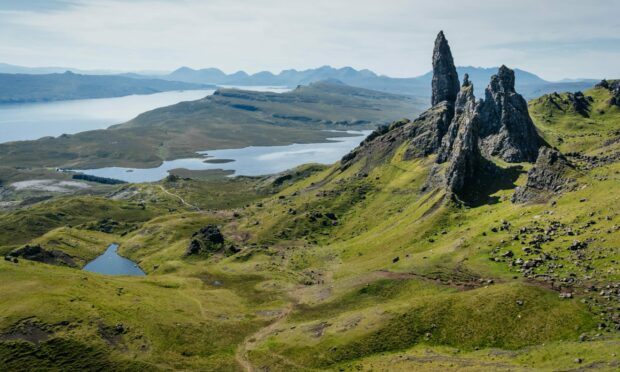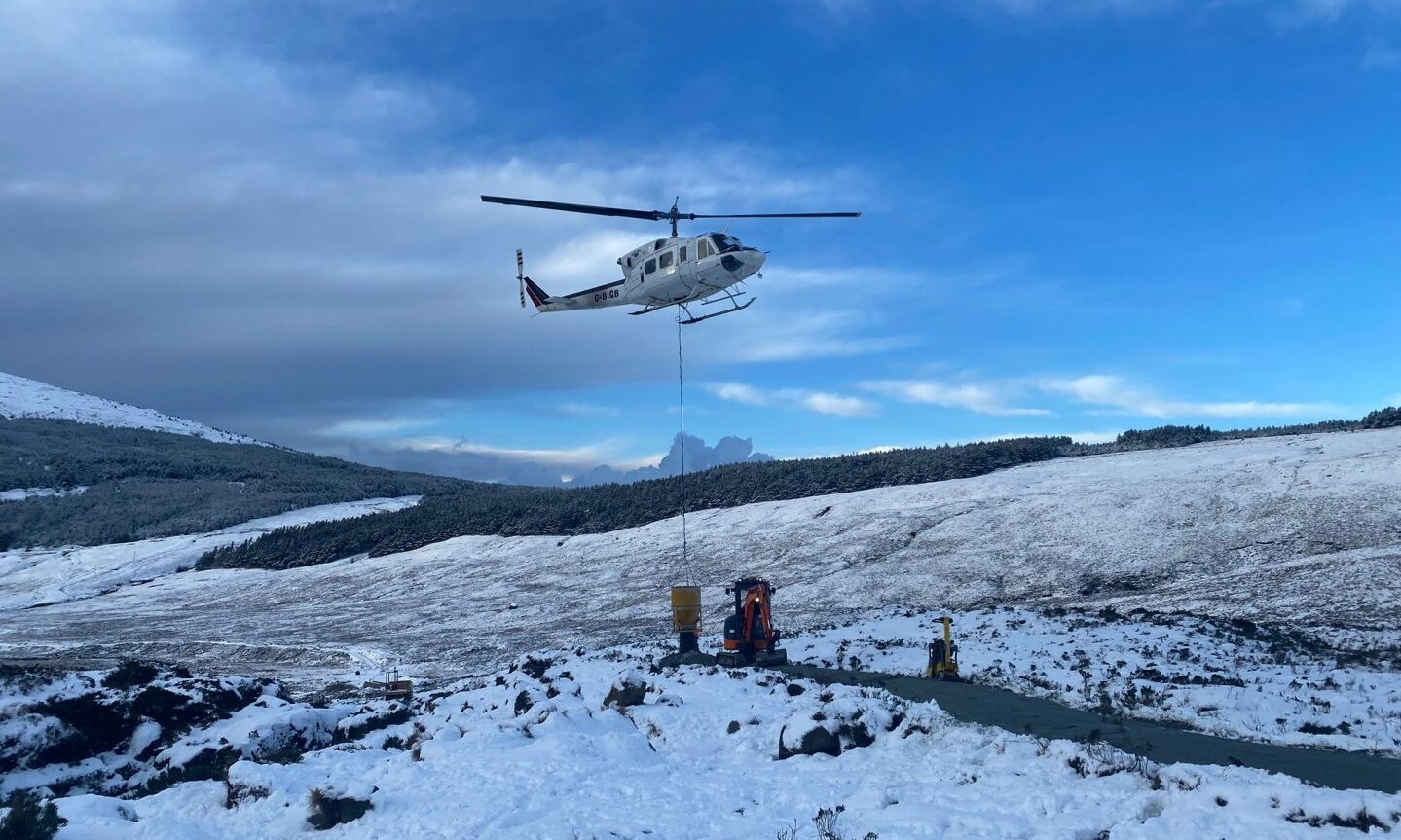A shout-out for volunteers to fix holes tourists have torn into a Skye hillside has sparked a call for environmental protection.
The Outdoor Access Trust for Scotland (OATS) is this weekend holding volunteer days to fix the slopes around the Old Man of Storr, one of Skye’s hot spots and natural wonders.
The volunteers will be repairing damage caused by the hiking boots of hundreds of people stepping off the paths.
But Skye councillor Drew Millar says it shouldn’t be solely up to the hard work of volunteers and organisations like OATS to care for sites like The Old Man of Storr, which attracts up to 200,000 visitors per year.
He instead wants more preventative measures to be considered.
‘Skye beauty spots are a free-for-all’
The veteran councillor said more debate is needed to hammer out the role of rangers in restricting the number of people going up to the Storr at one time.
“There are hundreds of people going up there every day, that’s far too many to be wandering up at one time for the path network, that’s why they spread out and go off onto the hill,” said Mr Millar.
“I think there is a huge discussion to be had about this, we need to ask if there’s a role here for the ranger because at the moment it’s just a free-for-all.”
Echoing earlier calls for Skye to be made Scotland’s next national park to protect its stunning scenery, Mr Millar said it was “a shame” volunteers were needed to make repairs to the site.
He added: “Our focus right now is very much on catering for the number of visitors that are coming to the Storr, but maybe we have to look at actually stopping so many going up there at one time.
“Maybe we should be allowing so many up and then waiting for so many to come back down again before we let more people up.”
Other popular areas of Skye which have had habitats damaged by huge footfall numbers and people going off-piste include the Fairy Pools and the Quiraing.
But Mr Millar said he doesn’t blame people for going off the beaten track.
The councillor added: “Lots of people don’t stick to the paths. Isn’t that what Scotland’s all about?”
How is pressure on beauty spots handled abroad?
Mr Millar says there are potentially lessons to be learned from how other countries handle the impact of visitors at their must-see sites.
He said he has seen effective patrolling at places like Mount Vesuvius in Italy, where the number of people going up at one time is limited.
Other places, like the Machu Picchu trail in Peru and Canada’s Moraine Lake in Banff National Park also have visitor measures to protect fragile areas.
Mr Millar said he believes that before looking at more significant visitor restrictions, further discussions should be held around making places like the Old Man of Storr more accommodating to visitors.
However, he does not support more car parks being built.
Instead, the Skye councillor would rather see tourists transported by shuttle services to beauty spots instead, slashing the “huge amount of campervans who are determined to get right to the door”.
Is it possible to curb visitors numbers?
The Land Reform (Scotland) Act 2003 means you can enjoy free access to most land in Scotland as long as you behave responsibly.
This complicates the picture for local authorities who want to control visitor numbers to certain sites.
An Access Exemption Order under section 22 of the Land Reform (Scotland) Act 2003 is only to used for a specific event, usually a festival or car rally, which can be up to 6 days.
It is however possible to secure longer term restrictions, for up to two years.
But there would need to be public consultation and the plan would need to be approved by a Scottish Government Minister.
A Highland Council spokeswoman said exemptions have not been used to restrict visitors, and to do so would require “significant justification”.
She added: “The only restrictions we trialled, and will likely continue to trial, were small areas, approximately 10 metre-squared at specific beaches that were being damaged by continuous camping, which were roped off and signed with an explanation.”
Want to help Skye’s landscape?
The Scottish Outdoor Access Trust (OATS) holds volunteer maintenance days to assist contractors who are improving paths to encourage people to stick to main paths.
Volunteers are asked to help restore damaged habitat, as well as with reseeding, turfing, digging over and blocking gullies, and filling in manmade footsteps in the landscape which are referred to as pigeon holes.
Click here to take part in this weekend’s maintenance days at the Old Man of Storr.






Conversation